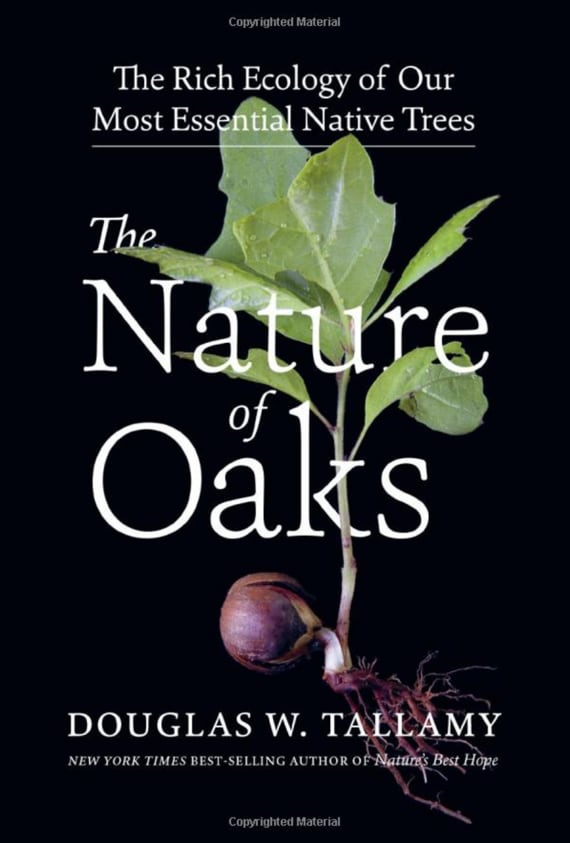
BOOK REVIEW: The Nature of Oaks – The Rich Ecology of Our Most Essential Native Tree, by Douglas W Tallamy, 2021, 197 p. In this book an entomologist follows oaks through the year in describing the ecology of the tree. The Ozarks lie in what is nominally the oak-hickory forest zone, and witness trees studies show that oaks composed about 70% of the early historic forest when first encountered by land surveyors. This book presents oak ecology from a caterpillar’s point of view through the eyes of a veteran bug scientist, and there’s a lot going on behind the scenes. One of the most important class of oak predator, the weevil, uses “beaks” to drill eggs into acorns. Maturing larvae then make an exit hole to get into the ground after the acorns fall, while ant colonies use the convenient exit opening after they leave. Retention of withered winter leaves on lower branches of oaks is seen as a deterrent to browsers seeking nutritious buds. The author cites extreme variation of tree host species and their load of insect (caterpillar) consumers. Oaks have the largest array of such consumers compared to few for tulip tree and black gum. He suggests that the low-grade accumulative toxins (tannins) make it worthwhile for many species to deal with oaks, whereas the need to deal with higher-grade toxins (milkweed) require more intense investment by limited species. In spring, oak gall wasps use their “beaks” to penetrate buds to deposit eggs. Other wasps prey on gall larvae with long “stingers” for injection of parasitic eggs leading to a defensive war where galls adopt hairs, fake compartments and such to deter that predation. Insectivorous birds such as chickadees and kinglets can survive the winter on dormant caterpillars present in large quantities because caterpillar antifreeze allows them to otherwise make it through the winter. Backyard plantings are said to seriously impact brood success for birds through the relation between caterpillars and specific host trees or shrubs. Caterpillar populations are described as at a nadir in June just because so many breeding birds have been consuming them. The bulk of the book is a long list of the diverse and often colorful insects that are hosted by oaks. The interesting species include the hairstreaks, one a mistletoe specialist, and another with a false head on the rear-end tail to deter jumping spider attack. The main late-season defense against insect herbivores in oaks is the thick cuticle of their leathery leaves. Strategies to deal with that include cooperative eating, massive mandibles, and internal leaf mining. I am surprised that so little is made of the important root fungal associations of oaks until there’s a discussion the oak’s effectiveness in CO2 sequestration where the mycorrhizae create glycoprotein substances that remain to bind soil. That stores carbon while improving soil stability and fertility. Hence the advantage of long-lived trees like oaks over poplars and the like that make a lot of wood in the short term only to release stored carbon soon after. The tannin and other tough chemicals in oak leaves incidentally enhance the soil as they slowly decompose providing protection against erosion and habitat for a variety of other creatures that complete their life cycle underneath oaks. Cicada larvae survive on what they absorb from roots of oaks in their underground stage but apparently do little real damage to the tree. The few that emerge regularly between the major cohort years are preyed on by savage looking killer wasps that are big enough to drag the paralyzed bugs to their underground dens for their offspring. Overall, this is an interesting way to look at a side of the genus Quercus we rarely hear about in forest ecology studies that should be of special interest for those interested in birds and butterflies.
Available at amazon.com or your local bookstore.
